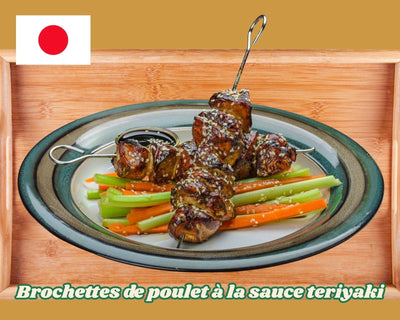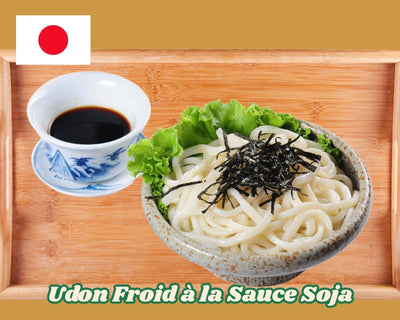Soy sauce , also known as shoyu or tamari, is an essential condiment in Asian cuisine. However, each country—Japan, China, and Korea—has its own variations of soy sauce, each with specific flavors and uses. Understanding these differences will enhance your cooking skills and enrich your dining experience.
Japanese soy sauce (Shoyu)
Japanese soy sauce , called Shoyu, is renowned for its balance of salty and sweet, with a rich umami flavor. It is made using equal proportions of soybeans and wheat, giving it a mild flavor and a distinctive reddish-brown color. The natural fermentation process, which lasts at least six months, also contributes to the complexity of its flavor.
Common types of Shoyu:
-
Koikuchi Shoyu (Dark): Accounting for about 80% of the Japanese market, this versatile soy sauce is suitable for a variety of dishes.

Koikuchi Shoyu soy sauce from Japan - Shoda - 1L
-
Usukuchi Shoyu (light): Lighter in color and slightly saltier than Koikuchi, it is often used in dishes requiring a brighter color.
-
Tamari Shoyu: Containing little to no wheat, it is suitable for those on a gluten-free diet. Tamari has a rich flavor and is often used as a dipping sauce for sushi and sashimi.

Tamari Japanese soy sauce (Tamari shoyu)
At Hello Asia , we offer a wide range of high-quality Shoyu, making it easy for you to choose the right product for your cooking needs.
Chinese soy sauce
Chinese soy sauce is generally divided into two main categories: light soy sauce and dark soy sauce. These two types differ not only in color, but also in flavor and cooking uses.
-
Light soy sauce: Light in color and with a strong salty taste, it is often used for seasoning and as a main ingredient in stir-fries, steamed dishes, and soups.

-
Dark soy sauce: Fermented for longer and containing sugar or molasses, it has a dark color and a slightly sweet flavor. This type is generally used to add color and flavor to stewed and braised dishes.

Chinese soy sauce has a stronger flavor than Japanese Shoyu, but is less salty than Korean Ganjang. To discover and experience the authentic flavor of Chinese soy sauce, you can check out the products available at Hello Asia .
Korean soy sauce (Ganjang)
Korean soy sauce , known as Ganjang, has a strong flavor and is saltier than other types of soy sauce. Its color is generally lighter, close to amber.
Main types of Ganjang:
-
Joseon Ganjang (Guk Ganjang): This is the traditional soy sauce, made from soybeans and salted water, without wheat. Joseon Ganjang has a strong salty taste and is often used in soups and banchan (side dishes).
-
Jin Ganjang: A more modern, industrially produced version with a milder flavor, suitable for various dishes.
If you want to experiment and add the unique flavor of Ganjang to your homemade Korean dishes, explore the products available at Hello Asia .
Choosing the right soy sauce for your dish
Choosing the right soy sauce depends not only on its origin, but also on the dish you plan to prepare:
-
Japanese Dishes: Shoyu, especially Koikuchi, is ideal for dishes such as sushi, sashimi, teriyaki, and udon.
-
Chinese dishes: Use light soy sauce for stir-fries and steamed dishes, while dark soy sauce is suitable for stewed and braised dishes.
-
Korean Dishes: Ganjang, especially Joseon Ganjang, is often used in soups like kimchi jjigae and banchan.
At Hello Asia , we're proud to offer a diverse collection of soy sauces from Japan, China, and Korea, making it easy to find the right product for every recipe. Discover today to enrich your culinary experience!




